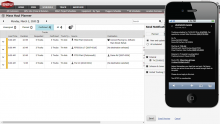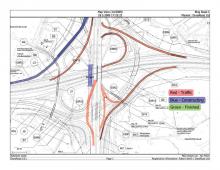
Using B2W Production Targets, the firm says that contractors can set specific, variable targets for expected productivity according to the conditions, plan and resources for each individual day. Without this capability, daily targets are typically set by averaging projected productivity from the estimate evenly over the duration of a job or job phase. The averaged targets, however, can present a distorted impression of job progress on a given day or series of days when compared to actual production data.
For example, a contractor planning a five-day highway paving job requiring 5,000tonnes of asphalt could set differing daily targets. These would account for limited productivity based on slower shoulder or on/off ramp work over the first two days, and much higher production at the end of the week for mainline paving. The variable targets would allow a more accurate assessment of job status versus plan each day.
Relying on an average target of 1,000tonnes/day instead could present an inaccurate impression that the job was behind schedule over the first two or three days.
According to the firm, contractors are pushing for better data to make more informed decisions in the field, and having timely data on job progress offers significant benefits. Using the B2W Production Targets and electronic field logs provides this key data and allows users to make timely adjustments to keep jobs on schedule and budget.
B2W Software users can now use current versions of the B2W Schedule solution for resource scheduling and dispatching and/or the B2W Track solution for field tracking and analysis to implement B2W Production Targets. Users can set variable daily targets in electronic field logs, and B2W Track then allows them to enter actual productivity in the field for comparison to the targets in real time.








